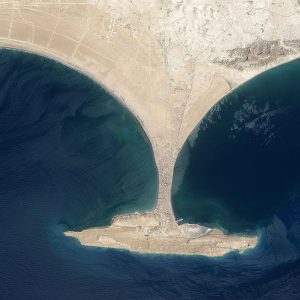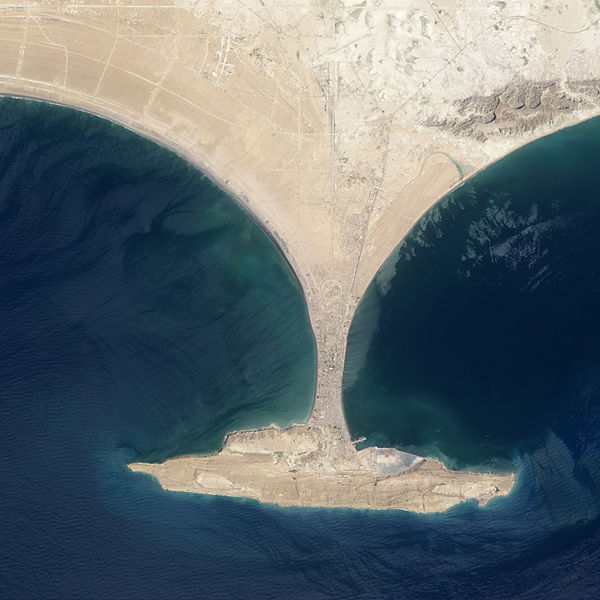Gwadar (Balochi and Urdu: گوادر; pronounced [ɡʷɑːd̪əɾ]) is a port city on the southwestern coast of Balochistan, Pakistan. The city is located on the shores of the Arabian Sea opposite Oman. Gwadar was an overseas possession of Oman from 1783 to 1958.[2] It is about 120 kilometres (75 mi) southwest of Turbat, while the sister port city of Chabahar in Iran‘s Sistan and Baluchestan Province is about 170 kilometres (110 mi) to the west of Gwadar.
For most of its history, Gwadar was a small to medium-sized settlement with an economy largely based on artisanal fishing. The strategic value of its location was first recognized in 1954 when it was identified as a suitable site for a deep water port by the United States Geological Survey at the request of Pakistan while the territory was still under Omani rule.[3] The area’s potential to be a major deep water port remained untapped under successive Pakistani governments until 2001, when construction on the first phase of Gwadar Port was initiated.[4] The first phase was inaugurated by General Parvez Musharraf in 2007 at a total cost of $248 million.[5] The port initially remained underutilized after construction for a variety of reasons, including lack of investment, security concerns, and the Government of Pakistan’s failure to transfer land as promised to the port operator, Port of Singapore Authority.[6]
In April 2015, Pakistan and China announced their intention to develop the $46 billion China–Pakistan Economic Corridor (CPEC),[7] which in turn forms part of China’s ambitious One Belt, One Road.[8] Gwadar features heavily in CPEC, and is also envisaged to be the link between the One Belt, One Road and Maritime Silk Road project.[9] $1.153 billion worth of infrastructure projects will be invested into the city as part of CPEC,[10] with the aim of linking northern Pakistan and western China to the deep water seaport.[11] The city will also be the site of a floating liquefied natural gas facility that will be built as part of the larger $2.5 billion Gwadar-Nawabshah segment of the Iran–Pakistan gas pipeline project.[12] In addition to investments directly under the aegis of CPEC in Gwadar city, the China Overseas Port Holding Company in June 2016 began construction on the $2 billion Gwadar Special Economic Zone,[13] which is being modelled on the lines of the Special Economic Zones of China.[14] In September 2016 the Gwadar Development Authority published a request for tenders for the preparation of expropriation and resettlement of Old Town Gwadar.
